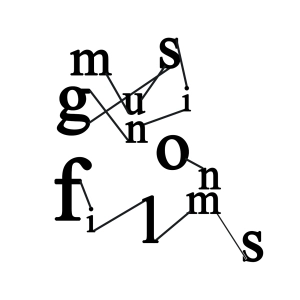
Bowling for Columbine (2002) seems to suggest that mass shootings and gun deaths are a uniquely American problem: Canada is a land of safety, with doors left unlocked inviting neighbours and strangers in, background checks and legislation. But these differences in scale do not prevent mass shootings (and particularly school shootings) from being a global problem. Whether a generation of schoolchildren growing up in fear or a minor exception, this does not take away the power and the tragedy of this violence. Indeed, I first learned about the 1989 Montreal massacre that is depicted in Polytechnique after yet another act of white male misogyny back in April after the “incel” motivated violence in Toronto. However, our understanding of “incels” emerge from an act of misogyny in itself, as Farah Mustafa and Mari Ramsawakh stress in the Toronto based publication Nuance, focused on immigrant voices around sexual health. As Mustafa and Ramsawakh write, the term ‘involuntarily celibate’ was coined by a woman addressing gender and mental illness; the concept of “incel” has instead been corrupted to ignore the “disabled”, “racialized”, “infantilized”, and “desexualized” “marginalized groups” that “don’t threaten violence when their needs aren’t met”; instead, the white male community of “incels” use their “lack of sexual experience” as a “flimsy excuse to uphold the patriarchy and perpetuate misogyny”.
The school shooting genre of cinema might be a small and under acknowledged unifying theme, it has many different incarnations. In Rudderless (2014), the background to our characters’ situation is framed through a difficult-to-process opening, staging a campus shooting before depicting a process of mourning. Ultimately, we cannot detach the reality of mass shootings from how this violence is represented, and how much of a fine line must be taken. Perhaps the most notable is Elephant(2003), named after the even more traumatising (and less humanising) IRA-themed Elephant (1989), a film that continues to scare me. If you find Van Sant’s Elephant voyeuristic and insensitive, Polytechnique will not solve that.
But Villeneuve has some strengths that might be in Polytechnique’s favour. His use of monochrome allows for a degree of visual separation from the reality of events. Brown, desaturated blood allowed Taxi Driver (1976) to pass the MPAA; here, the black, monochrome blood is arguably more effective than red blood, shifting from an overwhelming, fetishistic visual spectacle into cold reality: the violence and the mourning are a blackness. In Montreal’s cold and constant snow, so influential to the visuals of the dystopian Blade Runner 2049 (2017), there’s a contrast of whiteness in the falling snow and rooftops. Monochrome emphasises the film’s nature as an intimate character drama. The text in the opening and closing is genuinely respectful, acknowledging these characters are fictional; in the closing credits, each name is allowed a memoriam, slowly fading between each so no name escapes a person’s memory. I don’t want to imagine what it would be like for a survivor or a relative watching their reality played out on screen.
The complex structuring device isn’t unfamiliar to the manipulation of narrative time in Arrival (2016), or the shifting points of view in Elephant. Villeneuve allows us to confront these events from two points of view, without pathologising the life of the shooter. Instead, Polytechnique allows us to experience the trauma and mourning of violence as powerfully as Villeneuve achieves in Prisoners, witnessing consequences and aftereffects, but also the hope of a new and better generation. The focus on female engineering students acts as a thematic precursor to Villeneuve’s continued focus on female protagonists in positions of power in Sicario (2015) and Arrival, allowing us to witness the pressures of misogyny that women face, ignored by the shooter’s incoherent diatribe against feminism and women overtaking male positions of power. In a job interview, an employer suggests women must be in lower, less qualified positions with fewer hours to facilitate childbirth. We see how soul crushing and demoralising that assumption is. By the conclusion, we move through mourning into maternity without sacrificing workplace gender parity. Actions within the narrative reflect the difficult relationship between male and female identity: as the classroom is divided into two, between men and women (a practice often carried out by teachers, reflecting the negative roots of fundamentally gendered society), the inaction of men speaks volumes. No man, not even the professor, is willing to risk or sacrifice their lives to save their female classmates; it is easier to run away, with the shooter allowing male students leniency and a chance to leave. Administration, even a security guard, denies the possibility of this reality, assuming the incident to be a joke. The toxic ideology of a woman’s subservience is a recurring ideology, whether manifesting in (physical) violence or in violent words. Women become a sexual necessity, no matter how unattractive misogyny is; the price is a series of lifeless bodies without erotic dimension. Feminism becomes a slur: even at gunshot, in their last words, the girls deny being feminists, just wanting to live their lives. As Mustafa and Ramsawakh argue, the “ideology” and “violence” of misogyny is “terroristic”, despite fitting outside “our legal definitions of terrorism”.
There’s tenseness throughout, even when reading notes in the college library, listening to Tainted Love (1981) and The Safety Dance (1982) through the boombox, or photocopying lecture notes. Villeneuve is a highly visual director, but character and scenario remain imbued with substance behind those visuals. As one of his final French language works – Polytechnique would be followed by Incendies (2010) – Polytechnique is an important film, imbued within the distinct filmmaking processes of Quebecois film culture – a grant-based government focus on cultural products and the provincial language. But Canada never leaves Villeneuve’s works, from the focus on national borders (Mexico in Sicario, Montana in Arrival, filmed in Montreal), or the landscapes and isolation of Prisoners.




You must be logged in to post a comment.